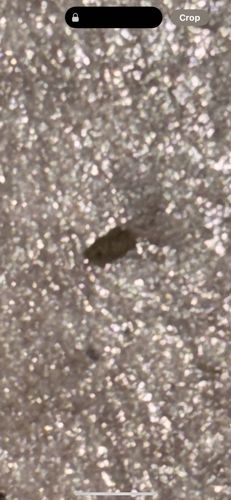Booklouse
Scientific Name: Trogium pulsatorium (a common species, though specific identification to species without clearer images is difficult)
Order & Family: Psocoptera (Order), Psocidae or Trogidae (Family - depending on species, Psocidae is common)
Size: Typically 1-2 mm in length, very small and often appear as moving specks.

Natural Habitat
Warm, humid environments, especially indoors where they feed on mold, fungi, starches, glues, and dried organic matter. Common in old books, stored foods, damp walls, and under wallpaper.
Diet & Feeding
Omnivorous detritivores, feeding on microscopic molds, fungi, yeasts, starches (e.g., from book bindings, wallpaper paste), dried plant and animal products, and stored food items like cereals, flour, and grains.
Behavior Patterns
They are mostly nocturnal and avoid light. They reproduce rapidly in favorable conditions. They do not bite humans but can be a nuisance when present in large numbers. Some species are wingless or have reduced wings, while others can fly. They are fast-moving given their size. The name "booklouse" comes from their habit of inhabiting old books.
Risks & Benefits
Potential risks include contamination of stored food products, damage to books, paper, and other starchy materials. They can trigger allergic reactions in sensitive individuals due to their presence or their excretions. They are not known to transmit diseases to humans. Benefits are negligible in household settings, but in nature, they contribute to the decomposition of organic matter, acting as detritivores.
Identified on: 9/7/2025